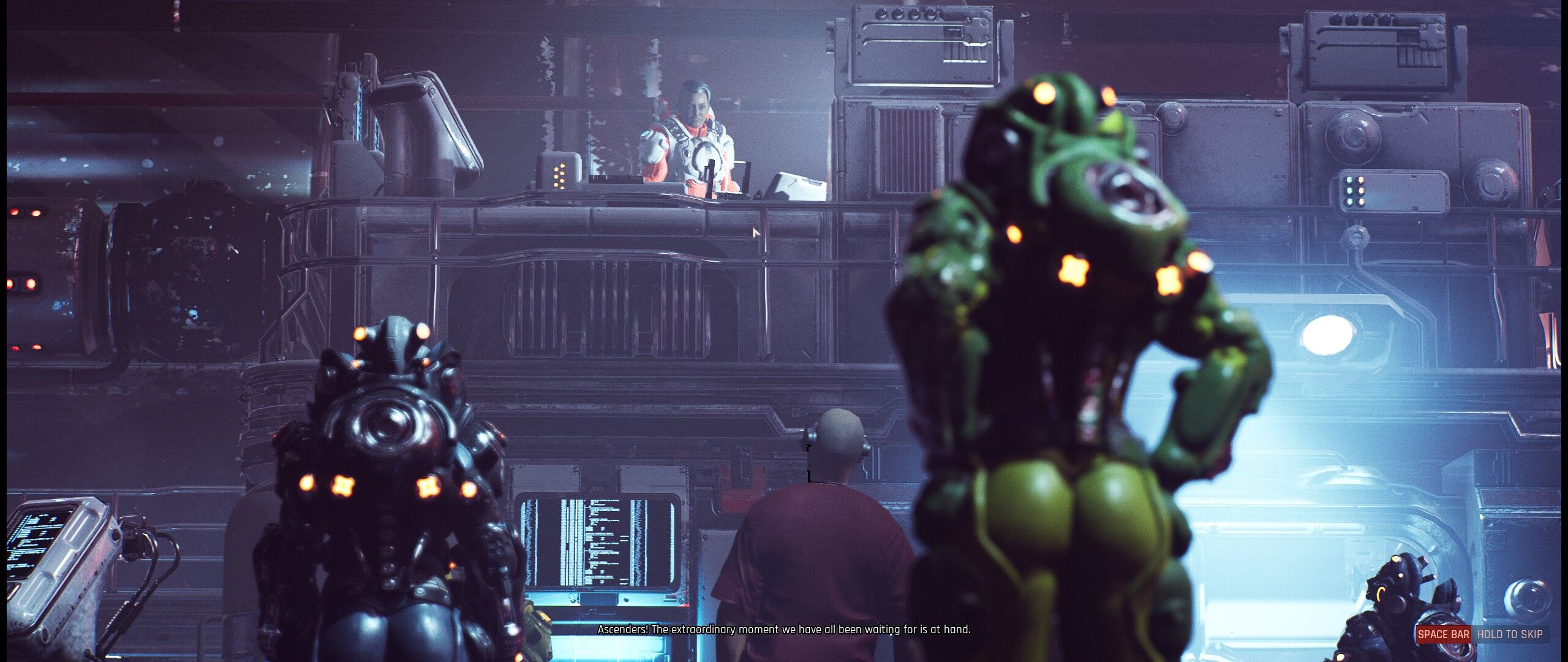The Ascent: A Cyberpunk 2077 Replacement?

One of the most interesting games last year – and not without its own share of controversies – seems to be regarded from many as a worthy alternative, if not an outright substitute, for the disappointment that Cyberpunk 2077 was. In a similar setting but with Aliens, an “indentured” – an indebted individual forced to work for a big corporation – arrives on Planet Veles, and suddenly afterwards the corporation, The Ascent Group, goes bankrupt and all Hell goes loose. You have to investigate and find your way on this big metropolis, and defend yourself in the struggles for power happening in the aftermath. Comparing this to the CD Projekt game might seem absurd from the start, because although it is an Action RPG, it uses a completely different visual approach – not first-person like Cyberpunk, not even third-person like, say, Spiders Studio The Technomancer, but in a bird’s eye view, which is sometimes called “isometric” (technically, it’s not, but the term caught on), like Diablo, Titan Quest or Path of Exile.

Okay, but what’s the problem with that? Well, while all these games have their own fair amount of lore and depth, the broad, far away camera also works against that, by turning the physical distance into a psychological one: you don’t see too far ahead, you clearly know what’s behind you, you see a tiny representation of yourself and rarely if ever see the sky. You’re not inside the character in first person like Cyberpunk, which promised a really immersive, lived-in experience, where you would empathise and get involved with the NPCs and feel like your were actually there, with real people. An isometric action-RPG? You would immediately think of a hack and slash game or a flashy bullet-hell nightmare where you would barely know where your character is among all the chaos. Not only the tilted angle and the field of view seem too broad and remote for such an intimate experience, isometric action RPGs are traditionally associated with shallower, simpler reflex-oriented gameplay, with much less world building and unsophisticated, straightforward quests.
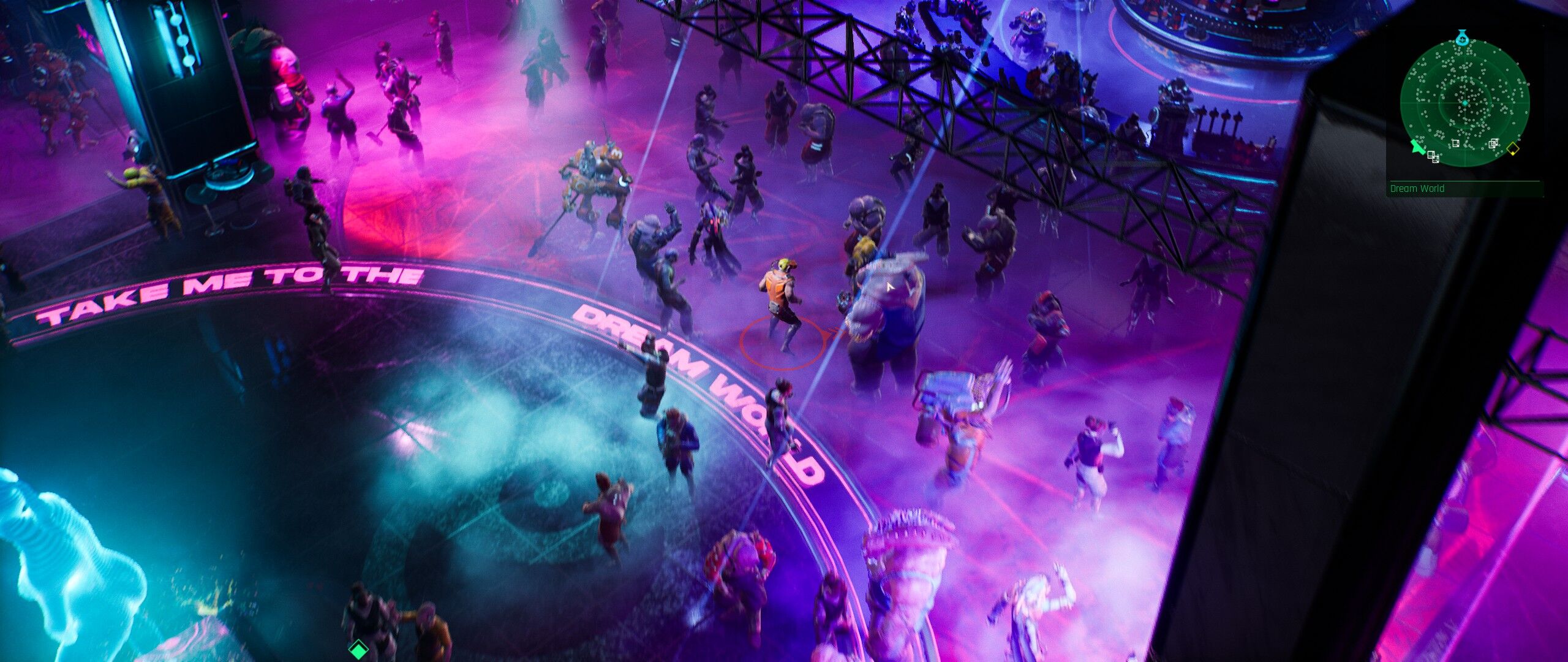
That’s one of the big triumphs of The Ascent, one that made some enthusiastic fans declare it the best game of 2021. Somehow, if at least partially, it manages to break the aforementioned tropes. The moment the rain starts pouring in the trash-littered narrow streets of the impoverished lower levels of the technological complex in Planet Veles, that the raytraced puddles of water in the ground start forming, that some non-player characters start taking their transparent umbrellas out in the middle of the crowd, that your steps start splashing water around, and the incredible surround sound gives you an ample 3D impression of what’s happening, you can’t help but feel wet.

When you get down to the toxic levels of the underground and are attacked by fetid beasts in the middle of big pipes and valves and industrial machinery stained with entrails and blood, you can almost smell the stench. When you navigate the tight streets of the habitational levels replete with NPCs of different species and complexions and hear and read the chatter around and hear the appropriate disco-like music, you can almost feel the drama and personal lives of the people – and creatures – living there, and it really sinks down like a real place, not a mere background for mindless explosive action. All this, with a delicious soundtrack which is also subtle and effective, with the reggae song when I went to the hacker’s lair cracking me up in laughter.
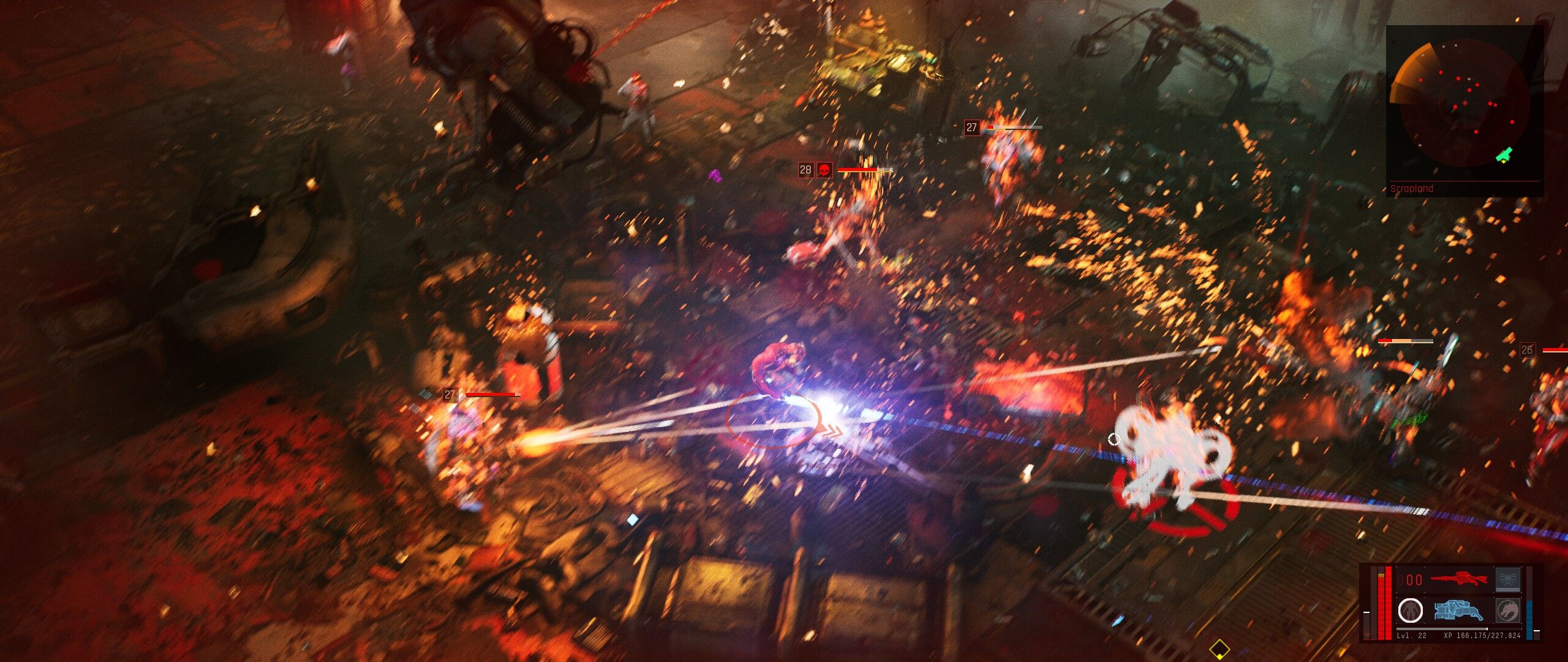
Moreover, to be frank, I lied to you. Although the game is mostly in an “isometric” type of view, it rarely stays there for too long. With camera changes that resembles games like Nier: Automata (but much more subtly), the viewpoint tilts, zooms and pans smoothly during your trips and fights, in a manner that always makes sense not only in a rational but also emotional way. Even some of the real-time rendered cutscenes get smoothly transitioned from the isometric view to a third-person, sometimes first-person view of the scene.
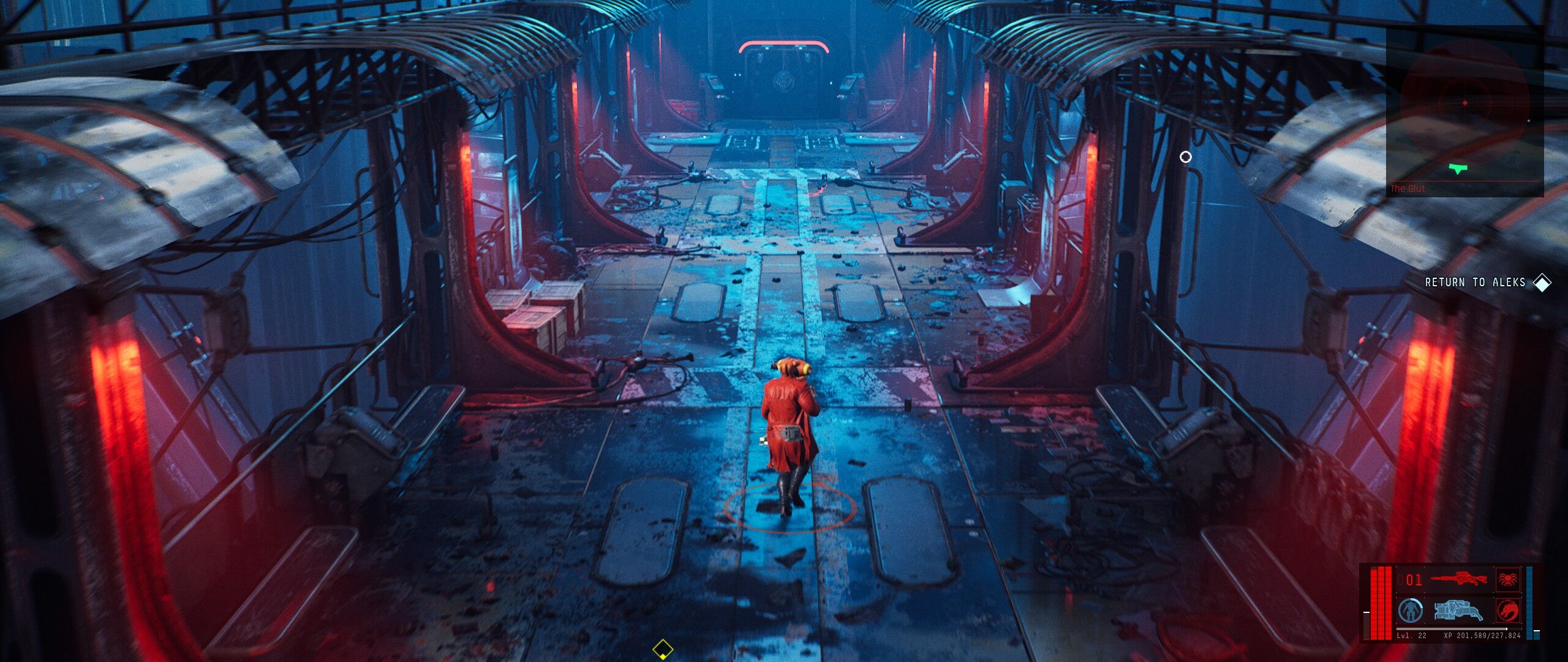
When you are in a desolate wasteland, it zooms out and hints at how small and insignificant you are; when you are in the crowded market streets, it changes the angle to reveal more of the tight corners, crooked stairways, tortuous alleys, vertical layers and many levels of the stores, apartments and passages. When you go to the sumptuous upper level with all the rich people, it straightens out so you see plants, recreational areas, water basins, fancy vehicles parked and tilts again to show you the direction you should be taking. It never feels forced, it just seems the natural way of looking at the scene, so much that not being able to control the gamera in this game never feels like a downside.
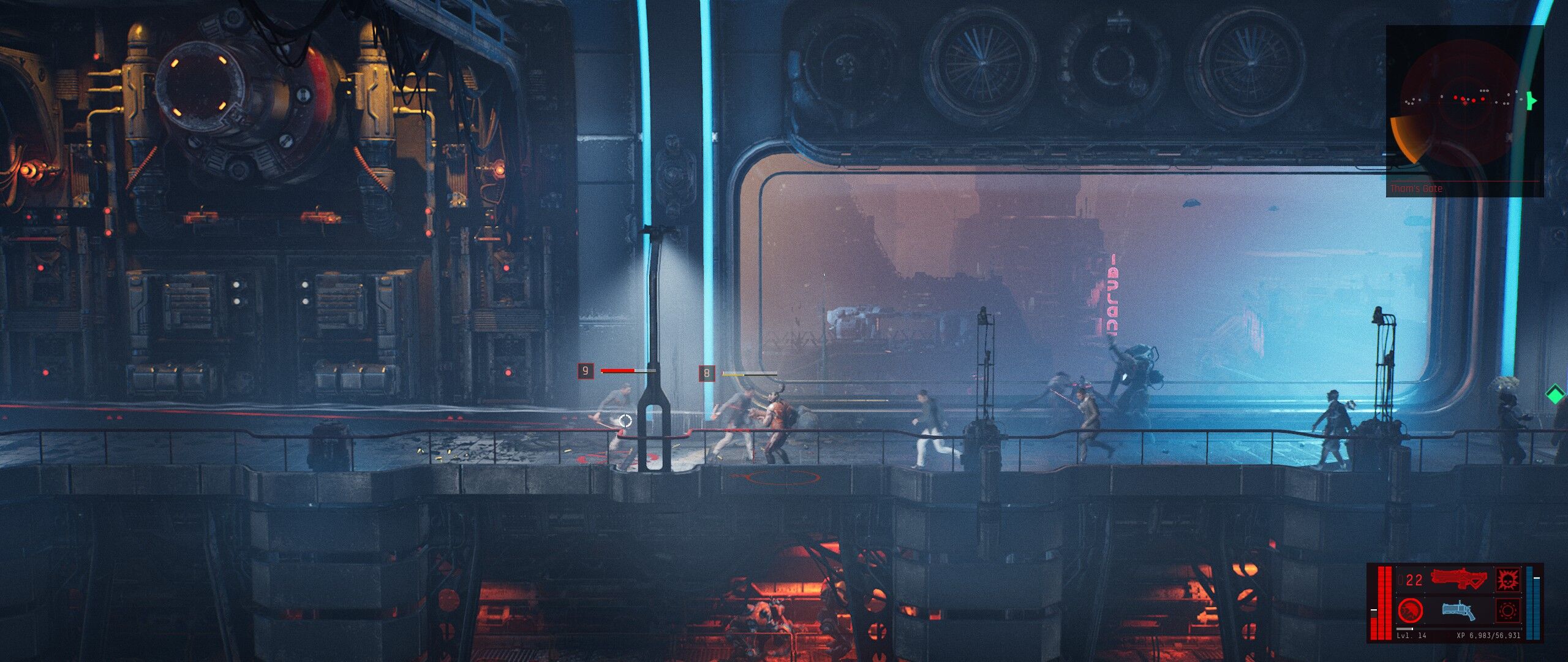
In summary, the absurd amount of worldbuilding, psychological tricks and attention to detail this game has somehow compensates the literal superficial approach it takes to visuals. The actual story, in a sense, follows the same general pattern: it is not a masterpiece of literature by any means, it has some clichés of the space/cyberpunk genre that just had to be there, but you know when you see a movie with a rather bland story, except the actors were so good that they made up for it? It’s just like that, the story feels very true and realistic to the setting, it feels that something that could happen in that situation; even the plot twists make a lot of sense and are, in a way, unpretentious, not magical or Deus Ex Machine style.
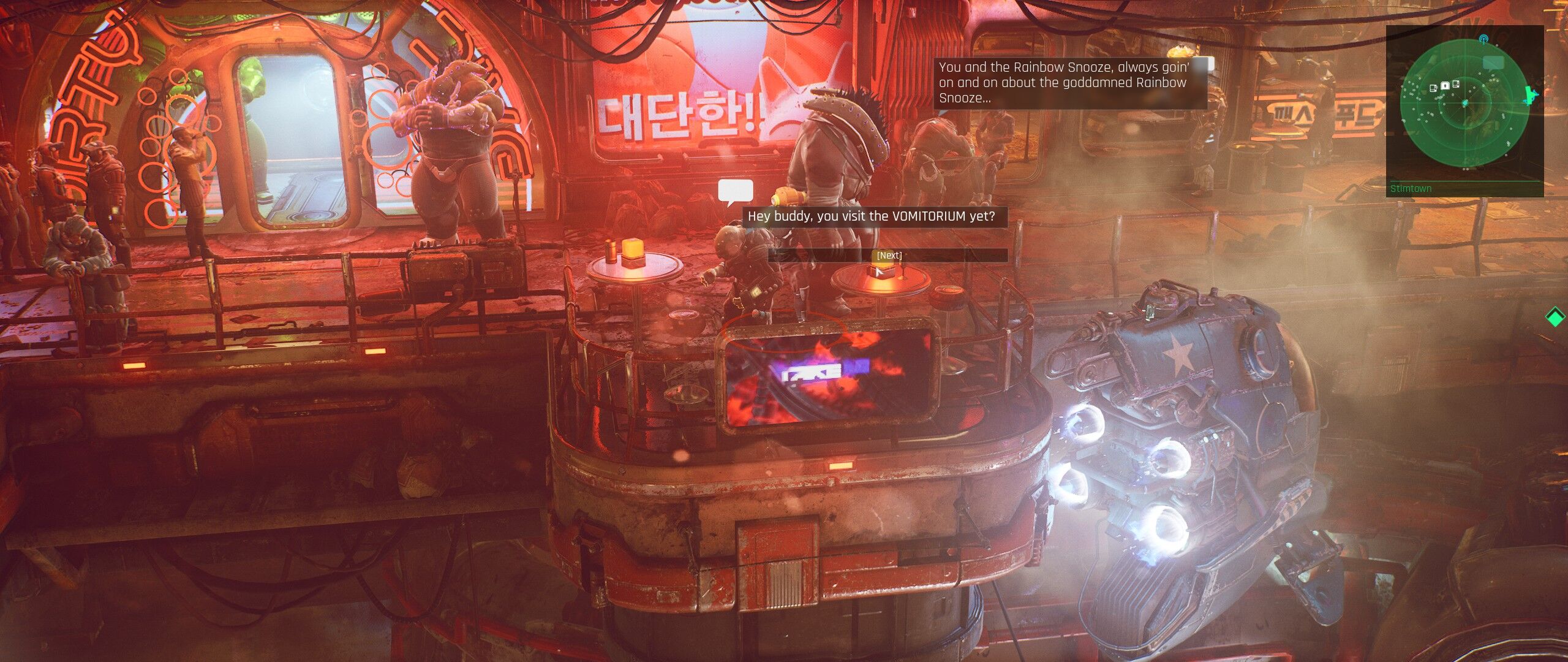
You always seem to be in a coherent universe, playing by its rules, subject to its penalties, and some puzzles of the game require you to think like you are there, which I found quite easy to do given all this context and sense of presence.
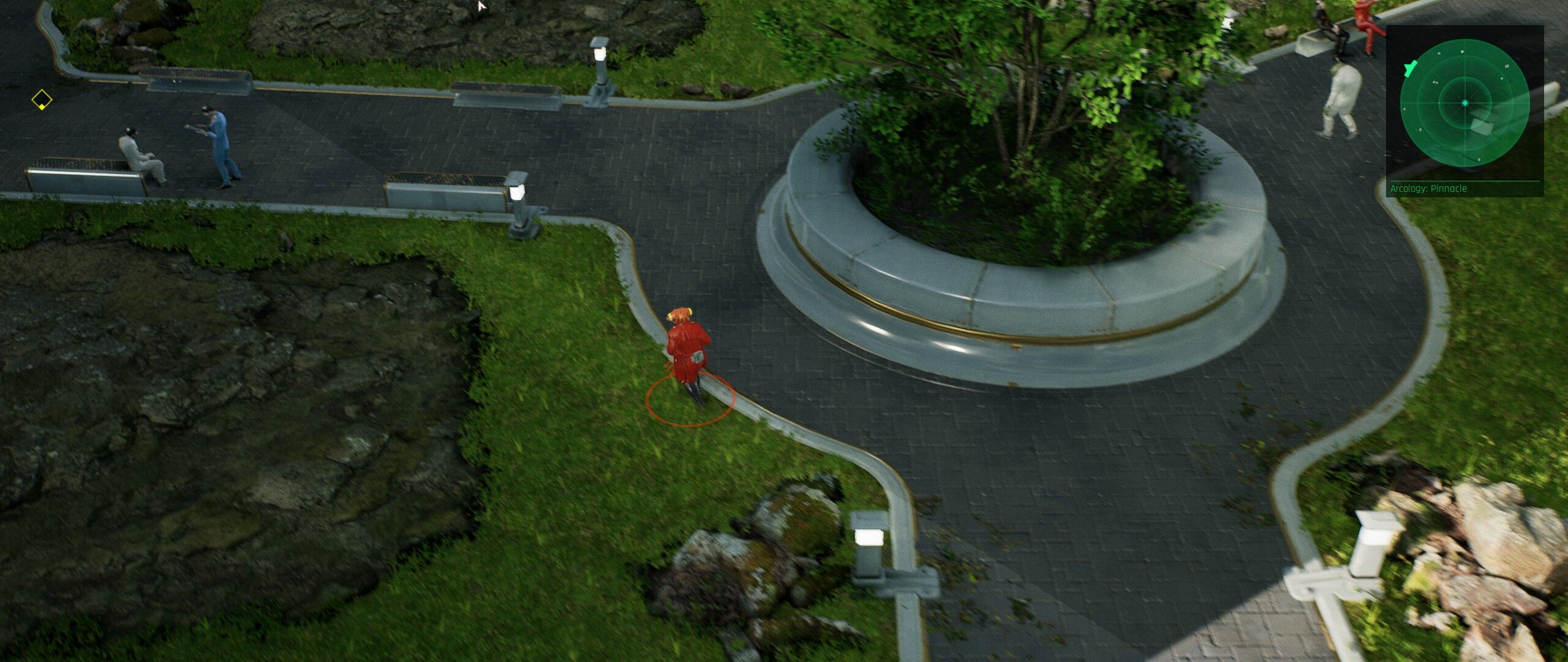
It doesn’t have melée (it’s a twin-stick shooter - but there are enemies that can melée you), but the bullet hell and explosions? It’s still all there, it’s packed with action, with tech trees and powers, augmentations, upgrades, leveling up and balancing out to get the attributes you want – although you can level up a lot in this game and get to maximum level on all attributes in around 40h, if you don’t finish the entire game with all sidequests first (which I did in 33h). There are all sorts of creative powers, from crazy kamikaze spiderbots you launch on enemies to ground-shaking thumps on the ground, and although you can go wrong if you level up too generic, you can easily read guides for min-maxing the character in a way that gets you to the ending rather quickly. People reported spikes of difficulty – mainly with the bosses – that I never experienced, likely because I followed some of these hints.

But let’s go to a bullet-list of what to expect of this game. Let me tell you upfront what you don’t get:
- There are no companions. A few powerups give you timed drones or robots, so the mechanics for them is kind of there, but you can’t recruit NPCs to fight at your side.
- There is no police force to arrest you if you go rough in an area. There are safe zones where you simply can’t shoot and be shot.
- There are no vehicles to drive around.
- There are factions in the game, but you don’t really side with any of them outside of the story.
- Since it’s a linear story, you don’t really get moral choices to see all sides of the question.
- There does not seem to be any kind of automatic scaling of enemy levels on the game. It means that you can go to an area which you are not equipped to tackle and will die a lot trying to navigate through it, and some other areas will have pesky underlevel enemies attacking you that aren’t even worth fighting. You can always run past them, though.
- The minimap is so limited it is only useful to tactically see the enemies nearby (as they can be occluded by the environment) and chests when you’re close enough.
- You don’t have character classes.
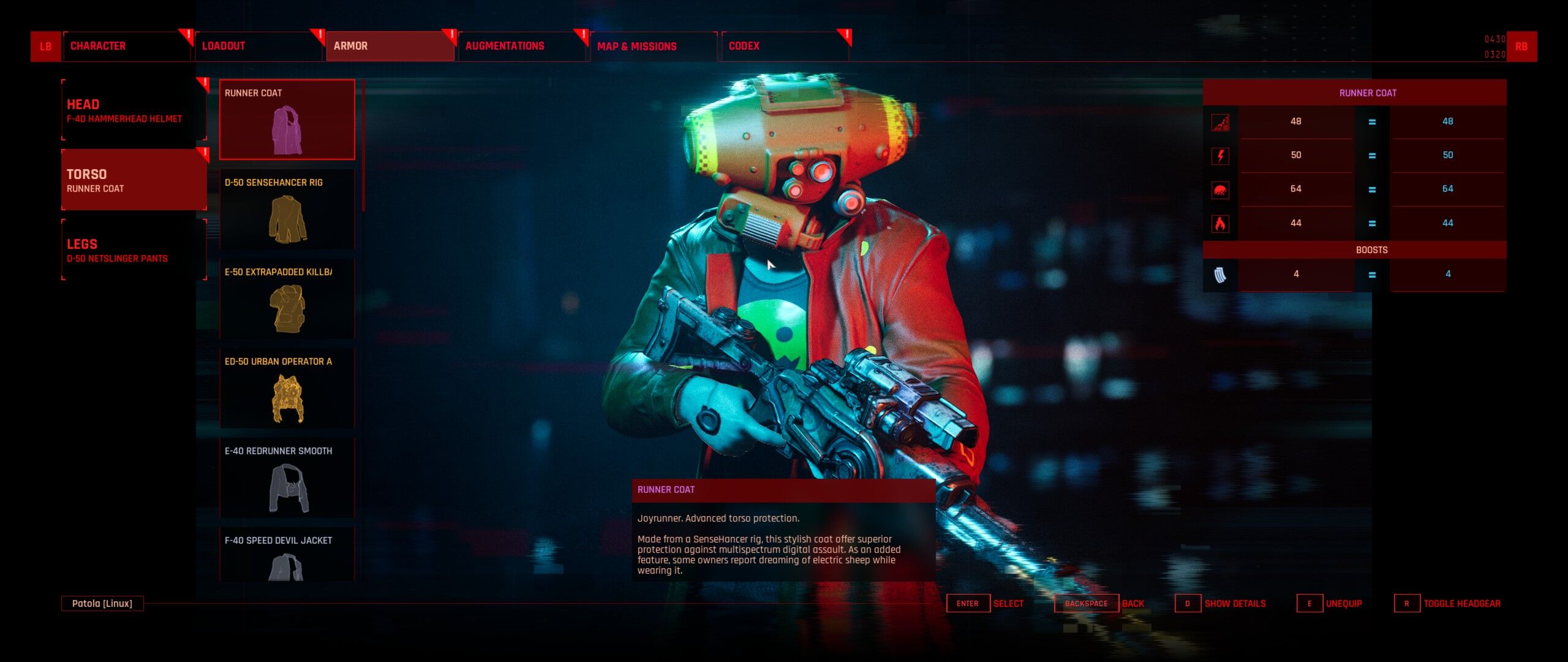
On the other hand, you have both cosmetic and functional customization options – you have a special vendor, the stylist, which can even change the appearance of your customizations (“transmogrification”). There are plenty of destructable and explosive items, from the classic red barrels to parked vehicles. You can roll (dodge) and crouch, unlike most isometric action RPGs. You can fast-switch between two weapons but can carry an infinite amount. There’s no weight limit and ammo is infinite. Besides the two weapons slots you also have a “tactical” slot which is some kind of power. One of these powers allows you to pilot a slow “pocket mech” for a limited time.
You have bosses, minibosses and a handful of timed battles. You don’t suffer consequences for killing innocents (other than your contractor whining about it) and even for dying – you respawn with almost all your health and all your armor, experience, etc. The enemies in the area also respawn with full health. There are four types of damage: ballistic, energy, digital and fire. You can use different armor with different ratings for these types of damages on the head, torso and legs. You can respec your skill points for a price on the augmentation store.
You can continue playing after the end but there’s little point to it. There are no procedural quests and the side quests are not too many, so you would have probably finished them off too. The game has a (somewhat limited) photo mode, where you can zoom and tilt but not rotate around.
You get a free public transit system (a sort of a metro) that functions as fast travel. Not really useful though, and going by foot to the destination gives you more fighting and loot opportunities. The map (in a separate screen), different from the minimap, is very detailed and three-dimensional, with points of interest clearly indicated and pan and zoom capabilities.

A taxi system that takes you to a place on the level you are, and you can call from almost any place. There are big elevators to change levels, small elevators to go up and down in the level (there’s a lot of verticality in the game) and some floating platforms to take you to “islands” within the complex.
The Ascent is kind of open-world but as is the case with many games, you start by not being able to access to many areas, and unlock them as the story progresses. You have a “quest direction indicator” button that shows you a trail of where you have to go for the current quest.
Hacking is a simple mechanic, you have three levels of hacking for doors and other three levels for chests and on/off settings for analyzing devices, hacking ATMs, hacking turrets to fight for you and hacking miscellaneous devices (vending machines). You can also hack enemies (increasing their damage) and be hacked the same way if you don’t leave their sphere of influence on time. What determines your level and capabilities of hacking is your cyberdeck, with upgrades you find on chests indicated on the map.
Currency is very valuable in the early game (for buying stuff in stores and health packs in machines) but quickly enough you get rich by selling loot and in the mid-to-late-game you learn to hack ATMs, at which point you will already have the best gear anyway.
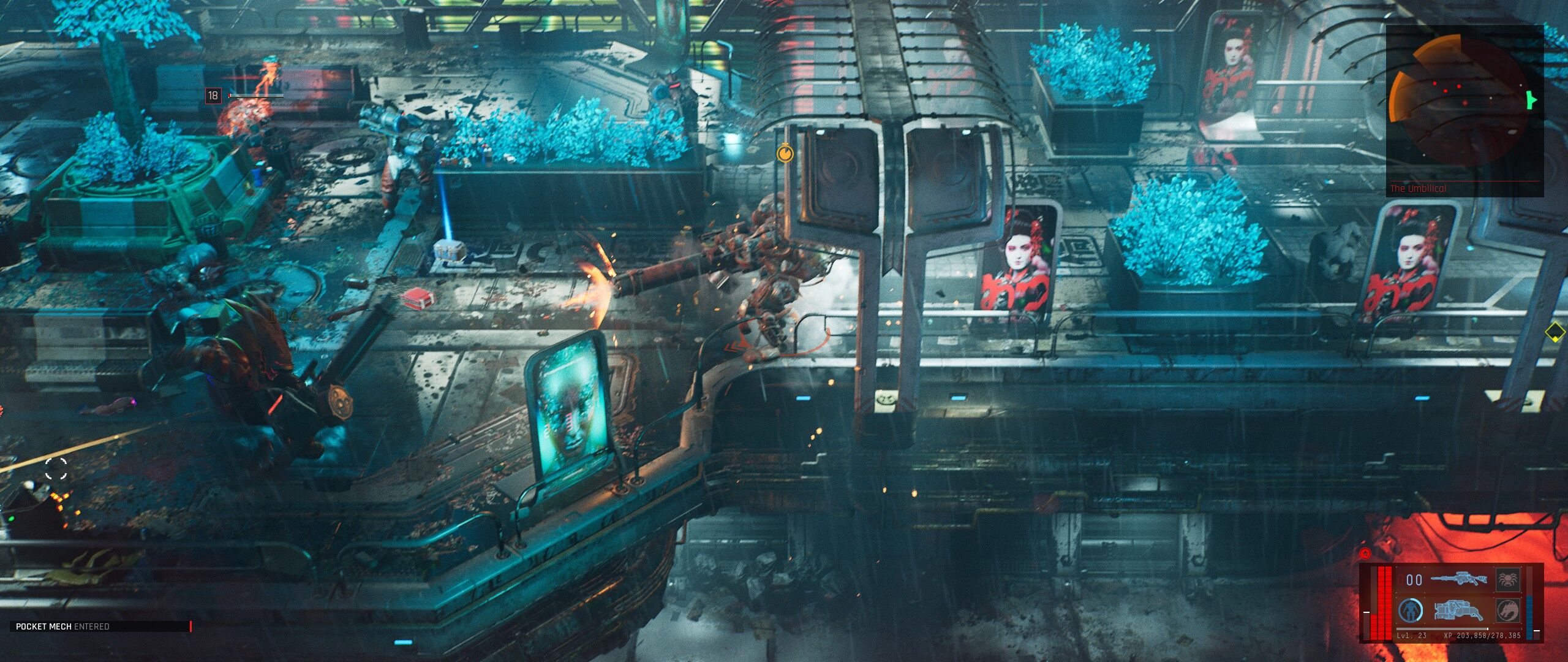
BUGS
Oh, yes, we live in an era of complex games. With complexity come the bugs, and this game is no exception. For all its beauty and intrincacies, this flawed jewel has them. It comes mostly in these two categories:
BUGGED VISUALS
At first I thought these came from raytracing, but turning them off would just show the same scenes. It’s almost always in cutscenes, and there are two: weird black contours or stains around characters, and excessive bloom / brightness / god rays on some scenes. These are harmless, might preclude reading some lines of the dialogues but in general do not harm the gameplay. These are Linux bugs (vkd3d), not game bugs. Nevertheless, they are already being fixed at this time.

BUGGED QUESTS
And this is where the most bugs of the game seem to reside, and the reason some people write very angry, frustrated reviews about it. Some of the problems stem from the game giving you side quests – even a level 2 side quest – then you can only complete after you progress much later in the game and unlock the area. This is not really a bug, but a design issue, a flawed quest tree. But the quests themselves sometimes do not trigger completion after you win a fight – and sometimes the enemies get stuck on the scenery. Personally the most blatant example for me was an arena that I had to redo 5 times – and in the 5th time the enemies were so easy to defeat due to my level that I took 5 seconds to complete it. And that’s the good side of it: although there are bugged quests, they all seem to eventually clean up if you just leave the area and return later.
LINUX
So, for the Linux-specific bits, let’s talk about raytracing. On my AMD RX 6800 XT, I was able to turn all the three raytracing settings on, so it recognized my Mesa 21.3 RT extensions. However, to be frank, I turned it on and off in several parts of the game and did not feel any difference – even in frames per seconds, which should have decreased if it was in effect. Not sure if on NVIDIA the experience will be different. The visual bugs I mentioned previously – at least some of them probably come from an imperfect translation of DirectX12 to Vulkan.
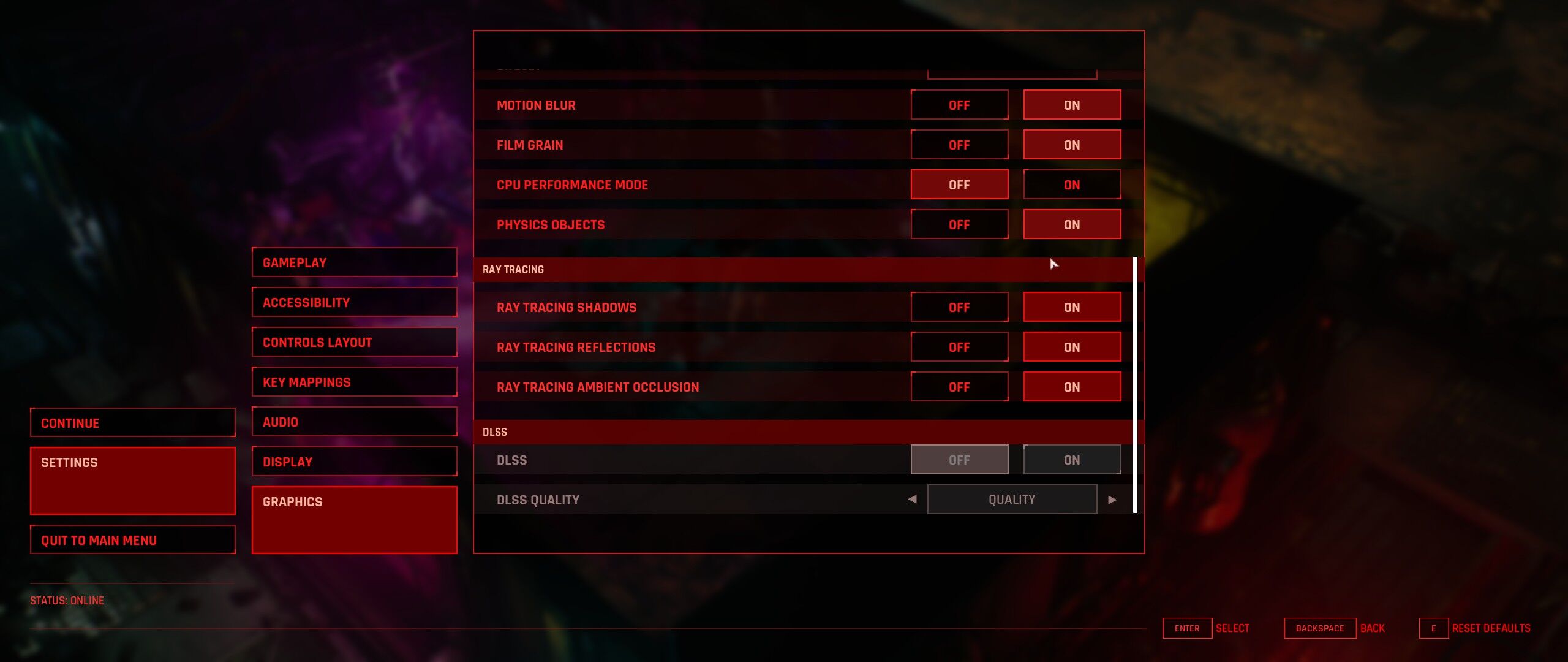
The game runs very smooth and can use DirectX11 (and in this case you can’t use raytracing) or DirectX12. Although DirectX12, which works via vkd3d instead of dxvk, has a fame of not being as optimized, I was able to consistently get 300 to 400 fps in 2560x1080 during the whole game, with no noticeable dips except for the cutscenes, of course. NVIDIA owners might get a more uneven treatment, specially ones in the Pascal architecture (e.g. GTX 1050).
I ran the game with regular stable proton – 6.3-8, at the time of this writing. I did not need to use Proton-GE or Proton-TKG or any kind of launch parameters. It worked out of the box. For the fix to the visuals, you will need a newer proton, though.
MULTIPLAYER
The game accepts multiplayer up to 4 players, but does not have matchmaking or a general lobby to meet people, so you need to resort to friends or the Unofficial Discord Group to find someone to play with. It is not impacted by anticheat and works perfectly on Linux.
Multiplayer is only cooperative – there is no competitive play (PvP or teams) and there is no friendly fire, i.e your shots do not harm friends unless they are explosive. It also has crossplay with other PC stores and XBox but not with Playstation. There’s no dynamic drop-in/drop-out, you have to start a multiplayer session, invite friends and get all players to join.
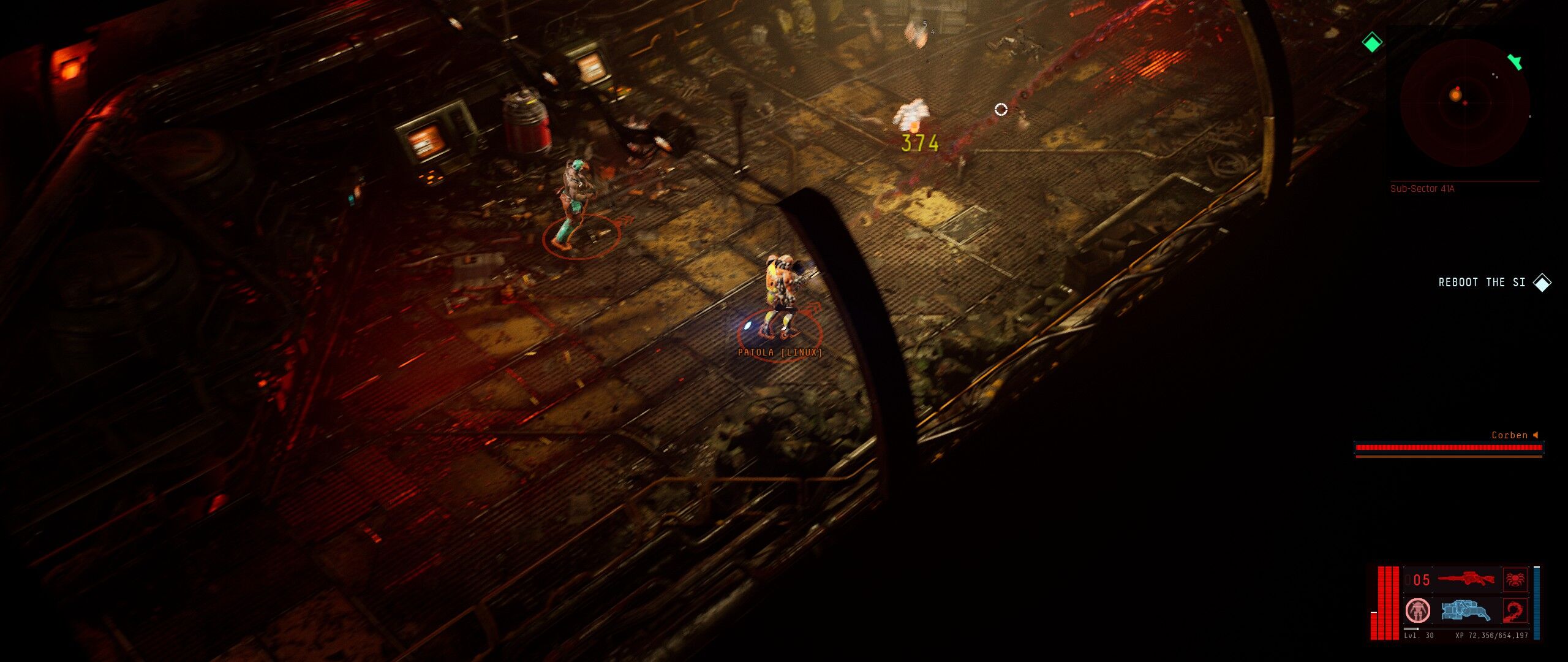
A fun thing to do is watching the cutscenes where each player character appears independently side by side with their fully customized appearance. There is also couch coop, which I did not try.
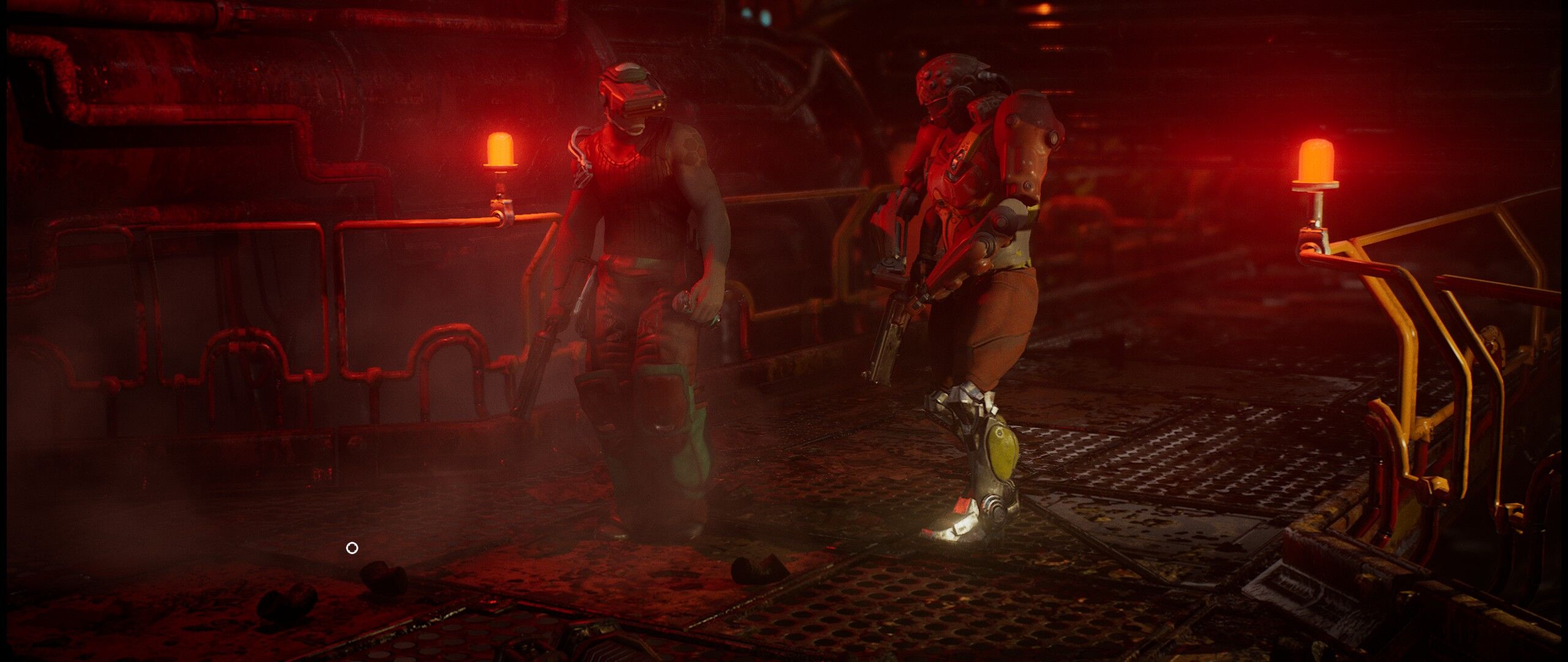
CONCLUSION
The Ascent delivers what it promises. It is a delightful experience, not only because it is very fun to play but because of the impressive visuals, excellent soundtrack, intriguing dialogues and chatter, ingenious camera work and fantastic worldbuilding, which get into you like few games do. I do consider it one of the best games of 2021, no doubt about it, and I’m hungry for expansions and DLCs, preferrably with some new mechanics like companions. I highly recommend the purchase and I would give it a 8 out of 10. It lost one point due to the bugged quests and another for not having a branching story or alignment to factions.
